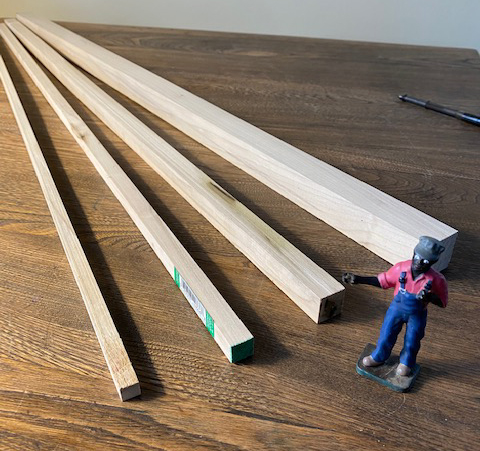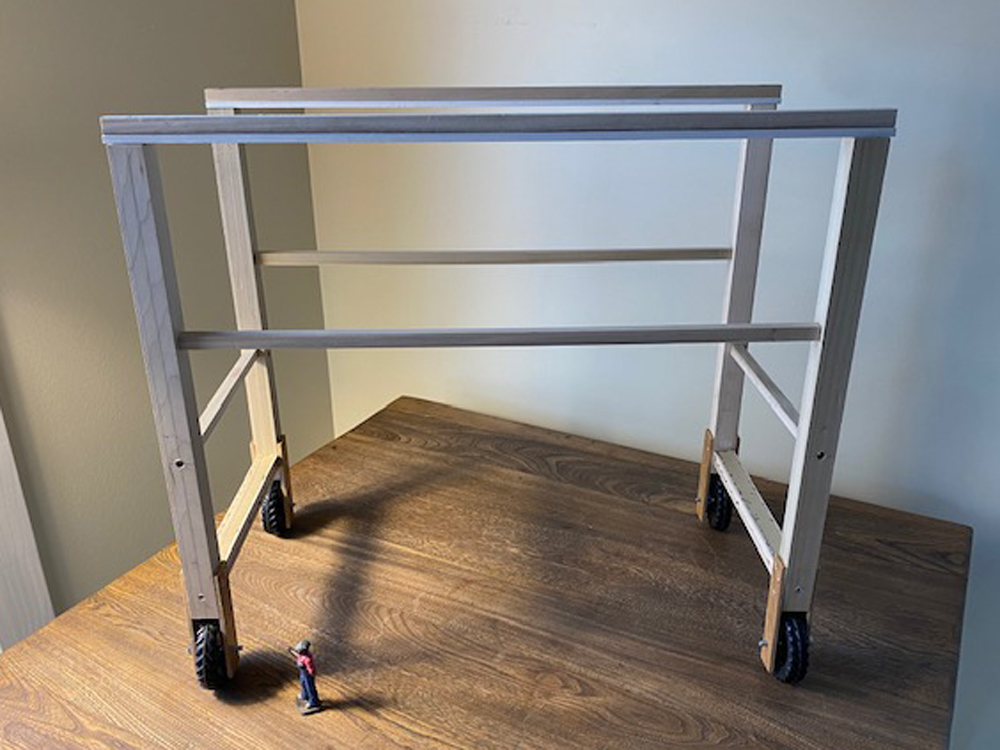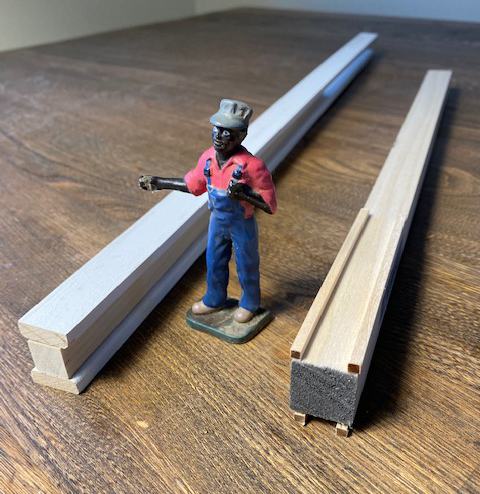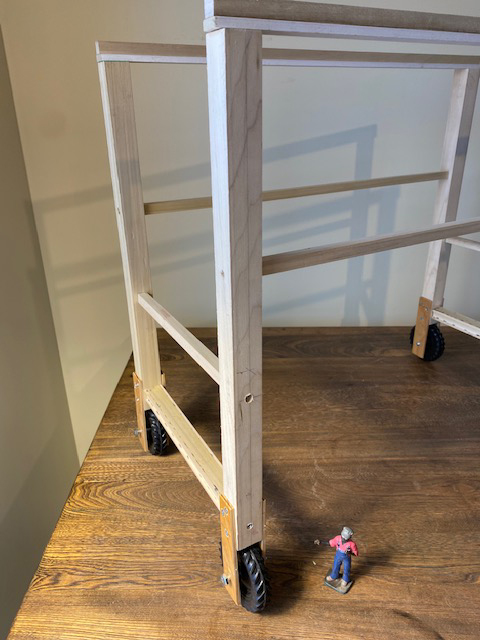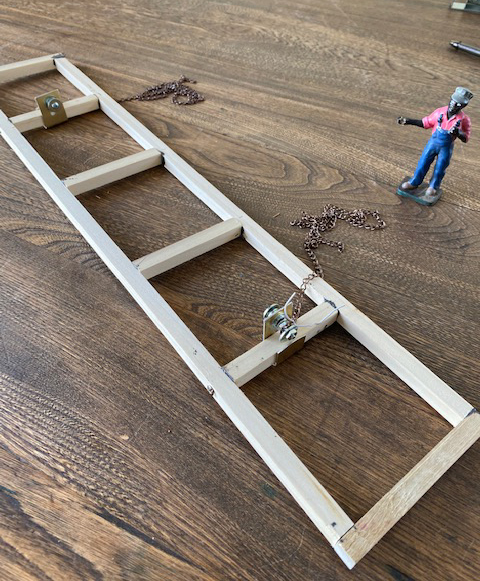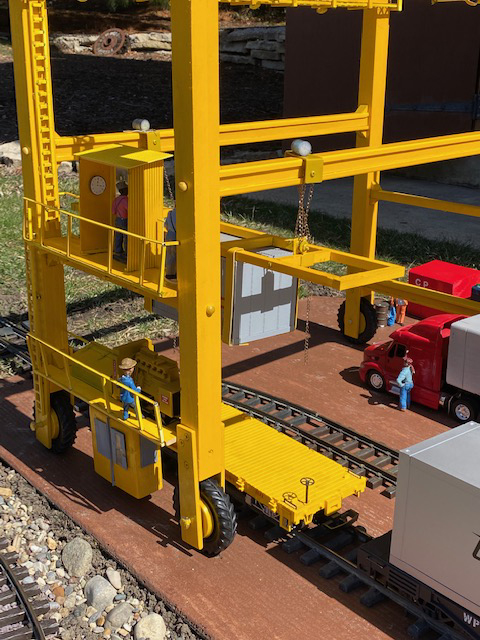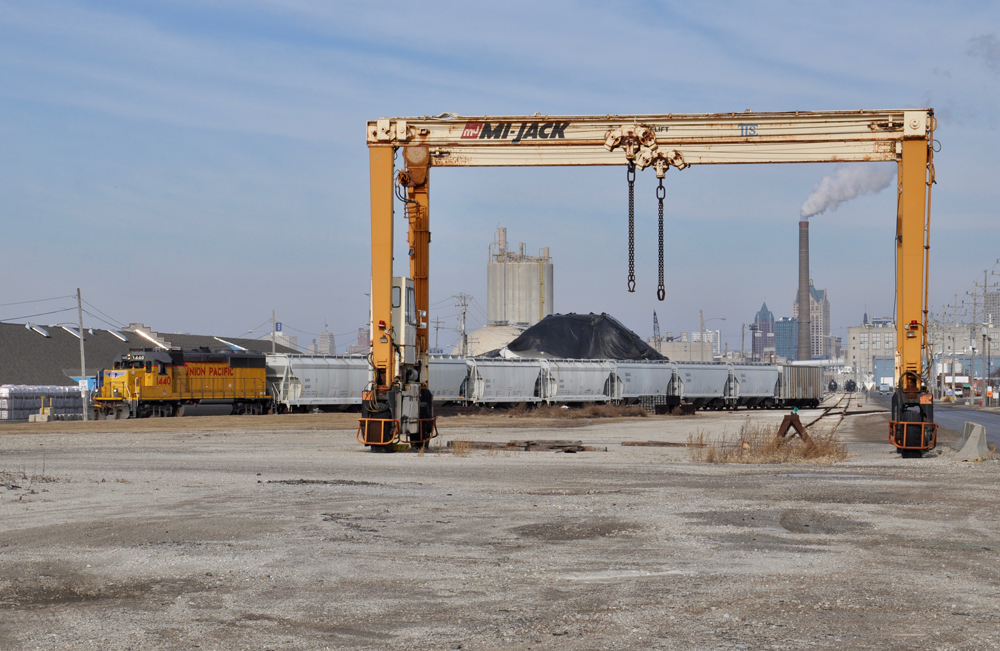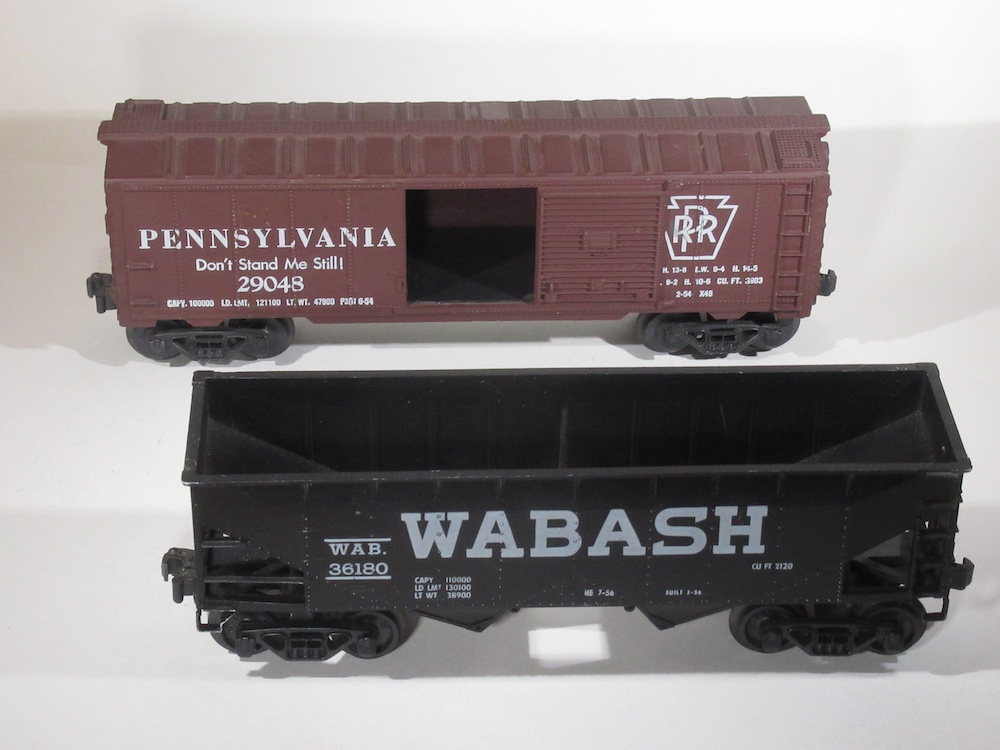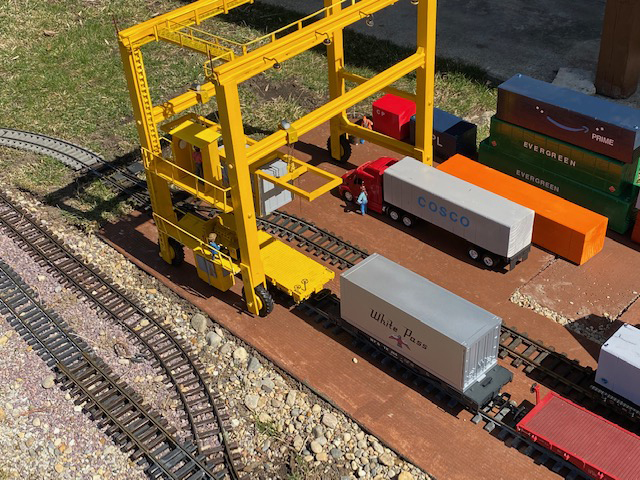
A garden railroad MI Jack Crane: Something unique, something different, that’s what I needed to endure the long winter of the Midwest when outdoor railroading comes to a dead stop! A building project.
If you are thinking about railroading in the period 2020, you must recognize the dramatic change to containerized shipping. What better way to update my railroad? The starting point was the discovery that Walthers has an HO kit that would serve as guide…something to help me along since the gigantic size of these machines precluded my finding exact measurements. Here is a handy conversion website to help you convert these figures: https://www.modelbuildings.org/scale-conversion-calculator/
I needed to scale a model that is going to be approximately 22”H x 24” long and 12” high (convert Ho 1:87 to G 1:122,29, or 32.) I took a hard look at plastic (Plastruct), Styrene (Evergreen), then metal, and finally wood.
Neither plastic, styrene, or metal provided any structural pieces that did not require extensive and difficult alteration—so wood seemed to have the advantage. But a project like this means precise cuts, square joints, a framework that isn’t wobbly, or subject to warping. With limited shop skills and equipment, I knew it would be a stretch for me to take wood from the local lumber yard and reduce it to smaller pieces that was accurate enough to make tight assembly possible. But, I did recall that somewhere I’d seen something that approached miniture scaled lumber pieces. Menards. At my local store they sell a large assortment of a high quality precise wood that has uses for trimming out windows, cabinets, and in my case model building. I believe they call it “Architectural Lumber.”
So, using a powered miter saw, the project was underway. Here is a summary of production highlighting each major structural piece and material used:
Basic structure: Wood. I-beams built up using small wood strips. Tower legs straight from the wood selection from Menards with almost zero modification. You will be surprised how many different useable sizes are available.
Ladders, railings, operator’s shed: Evergreen polystyrene.
Walkways and decking: Screening/plastic material for gutter guards.
Grappler carriage: Wood. The pick-up arms are light metal bent to form a hook. Block and tackle are made from different sized washers assembled and strung with inexpensive jeweler’s chain from Hobby Lobby.
Wheels: I spent some money buying a large “Tractor” tire to achieve the scaled look needed. The hubs are medicine bottle tops.
Lighting: These fun details are made of ceiling hooks and capped with wood buttons used in covering screw holes in furniture.
Fastening materials: Wood screws (pre-drill guide holes to avoid splitting), epoxy(JB Weld).
Paint: Canned spray paint with several coats, then sealed with a UV Varathane.






